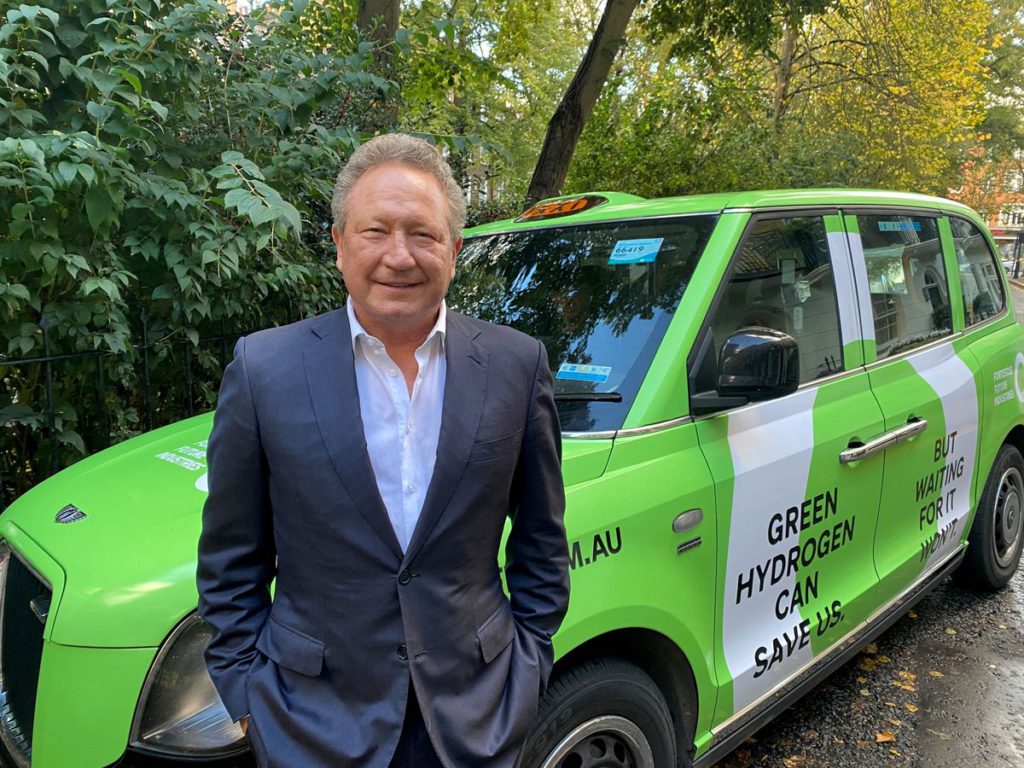Fortescue reveals green steel plans but warns task is enormous
Bloomberg News | December 19, 2022 |

Andrew Forrest, Australian billionaire and Chief Executive Officer of Fortescue.
Fortescue Metals Group Ltd., the world’s fourth-biggest iron ore miner, has joined forces with Japan’s Mitsubishi Corp. and European steelmaker Voestalpine AG to develop zero-carbon iron using hydrogen at a plant in Austria.

It’s the Australian miner’s first foray into so-called “green steel,” which aims to exclude coal from the steelmaking process and so help clean up one of the world’s dirtiest industries. Iron ore is the primary feedstock for the majority of steel, the world’s most widely used metal.
The project will use technology developed by Primetals Technologies Ltd., a venture involving another Mitsubishi company, that replaces coal-reliant blast furnaces with hydrogen and a smelter powered by electricity. If that electricity is entirely renewable, then in theory the process won’t emit any carbon.
“You make enormous amounts of carbon when you make steel — it’s about 7% to 10% of the world’s emissions,” Mark Hutchinson, chief executive officer of the company’s green energy division, Fortescue Future Industries, said in a phone interview. “We’ve got to fix this.”
Fortescue’s joint venture, which will mostly be funded by European government grants, aims to complete a pilot plant by 2025, and build a commercial scale facility by the end of the decade, Hutchinson said.
Hydrogen demand
Decarbonizing steel is a crucial step in the fight to halt climate change, and development of large-scale plants would send demand for hydrogen soaring. That would benefit Fortescue, which plans to produce 15 million tons a year of green hydrogen by 2030 as part of Chairman Andrew Forrest’s goal of becoming a major clean energy producer.
A growing number of miners and steelmakers are racing to develop green steel technologies using hydrogen. The most advanced is Hybrit, a Swedish joint venture of steelmaker SSAB AB, iron ore producer Luossavaara-Kiirunavaara AB and power company Vattenfall AB. Germany’s Thyssenkrupp AG, South Korea’s Posco Holdings Inc., and China Baowu Steel Group Corp. are also experimenting with green steel.
But the technology is expensive and at an early stage and often requires a high grade of iron ore. According to Hutchinson, the method developed by Primetals may work with the lower quality ore that Fortescue and others mine in Australia’s Pilbara region. Part of the goal of the pilot plant will be to test different grades, which Fortescue will supply.
Hutchinson cautioned not to expect quick results, saying that decarbonizing the world’s steel sector is likely to develop slowly over decades and will require “enormous” investment in renewable energy.
“To think about doing the entire industry, the amount of renewables needed to do that is just extraordinary,” he said.
Austria’s Voestalpine plans to begin switching its coal-based steel output to hydrogen from 2027. “Over the long term, our mission is carbon-neutral steel production using green hydrogen, for which we are already undertaking intensive research into promising breakthrough technologies,” Hubert Zajicek, the company’s head of steel, said in a statement.
(By James Fernyhough)
No comments:
Post a Comment